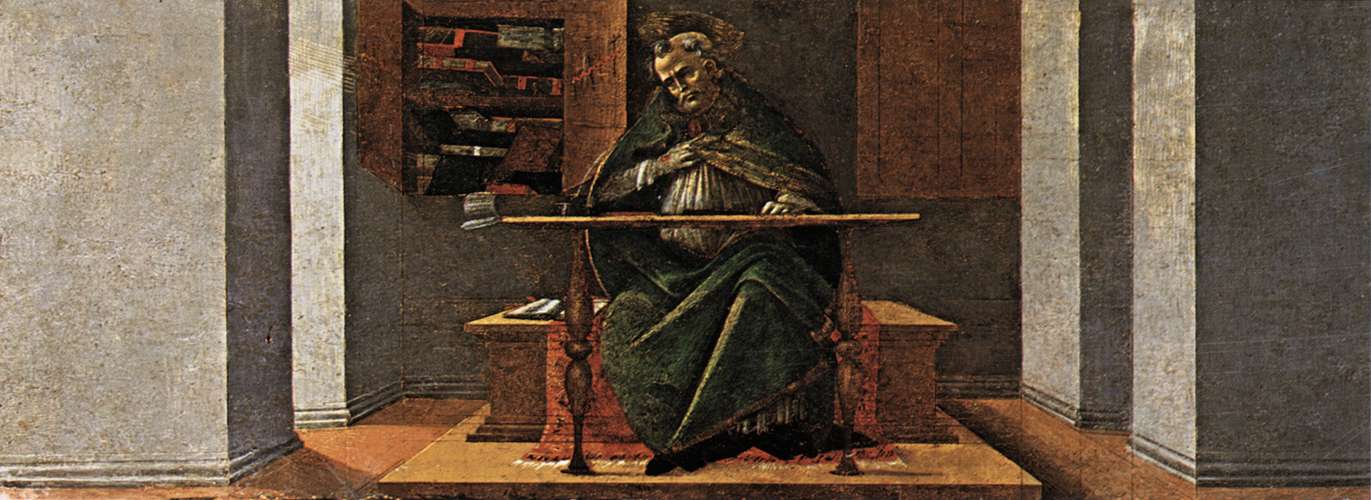Description
The painting "Saint Augustine in His Cell" by Sandro Botticelli is an impressive work of art that shows the artist's ability to create a balanced and harmonious composition. The artistic style used by Botticelli in this work is the early Renaissance, characterized by precision in the representation of the human figure and perspective.
The painting shows Saint Augustine in his cell, surrounded by books and writing tools. The composition is symmetrical, with Saint Augustine seated in the center of the image, flanked by two angels. The figure of the saint is represented in great detail, with a serene expression focused on his work.
The color used in the painting is vibrant and rich, with shades of blue and red contrasting against the gold background. Details on the books and writing tools are painted with great precision, demonstrating Botticelli's technical skill.
The history of the painting is interesting, as it was commissioned by Cardinal Giuliano de' Medici in the 15th century for his private chapel in Florence. The work was later acquired by the National Museum of San Marco in Florence, where it is currently located.
Little-known aspects of the painting include the fact that Botticelli used live models to represent the angels in the work, giving it a remarkable realism. Additionally, the painting is believed to have been influenced by the work of Fra Angelico, another early Renaissance artist.
In short, the painting "Saint Augustine in His Cell" by Sandro Botticelli is an impressive work of art that showcases the artist's technical skill and artistic style. The symmetrical composition, the vibrant colors and the precise details make this work one of the most outstanding of the Italian Renaissance.

